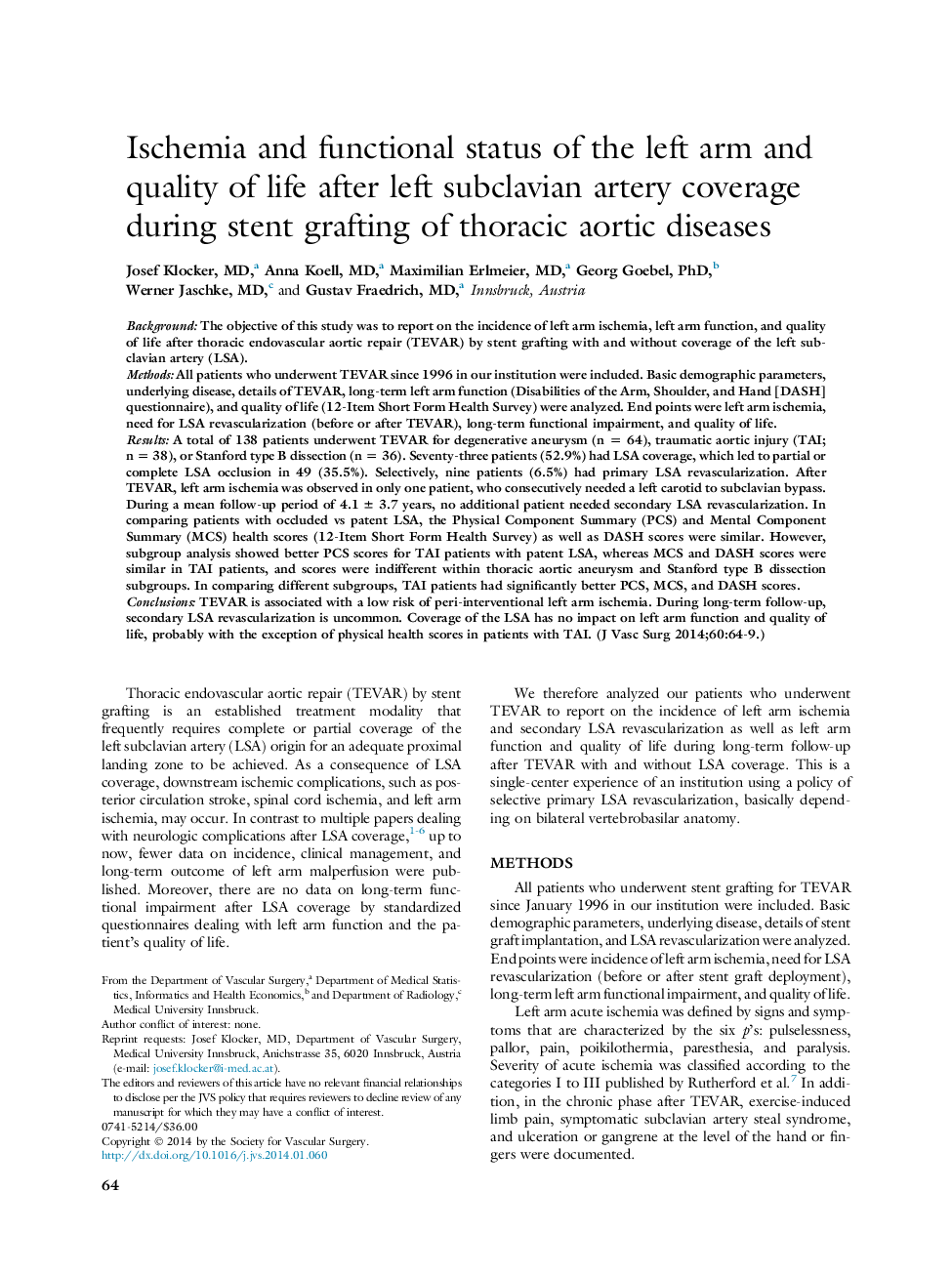| کد مقاله | کد نشریه | سال انتشار | مقاله انگلیسی | نسخه تمام متن |
|---|---|---|---|---|
| 2989407 | 1179840 | 2014 | 6 صفحه PDF | دانلود رایگان |
BackgroundThe objective of this study was to report on the incidence of left arm ischemia, left arm function, and quality of life after thoracic endovascular aortic repair (TEVAR) by stent grafting with and without coverage of the left subclavian artery (LSA).MethodsAll patients who underwent TEVAR since 1996 in our institution were included. Basic demographic parameters, underlying disease, details of TEVAR, long-term left arm function (Disabilities of the Arm, Shoulder, and Hand [DASH] questionnaire), and quality of life (12-Item Short Form Health Survey) were analyzed. End points were left arm ischemia, need for LSA revascularization (before or after TEVAR), long-term functional impairment, and quality of life.ResultsA total of 138 patients underwent TEVAR for degenerative aneurysm (n = 64), traumatic aortic injury (TAI; n = 38), or Stanford type B dissection (n = 36). Seventy-three patients (52.9%) had LSA coverage, which led to partial or complete LSA occlusion in 49 (35.5%). Selectively, nine patients (6.5%) had primary LSA revascularization. After TEVAR, left arm ischemia was observed in only one patient, who consecutively needed a left carotid to subclavian bypass. During a mean follow-up period of 4.1 ± 3.7 years, no additional patient needed secondary LSA revascularization. In comparing patients with occluded vs patent LSA, the Physical Component Summary (PCS) and Mental Component Summary (MCS) health scores (12-Item Short Form Health Survey) as well as DASH scores were similar. However, subgroup analysis showed better PCS scores for TAI patients with patent LSA, whereas MCS and DASH scores were similar in TAI patients, and scores were indifferent within thoracic aortic aneurysm and Stanford type B dissection subgroups. In comparing different subgroups, TAI patients had significantly better PCS, MCS, and DASH scores.ConclusionsTEVAR is associated with a low risk of peri-interventional left arm ischemia. During long-term follow-up, secondary LSA revascularization is uncommon. Coverage of the LSA has no impact on left arm function and quality of life, probably with the exception of physical health scores in patients with TAI.
Journal: Journal of Vascular Surgery - Volume 60, Issue 1, July 2014, Pages 64–69
